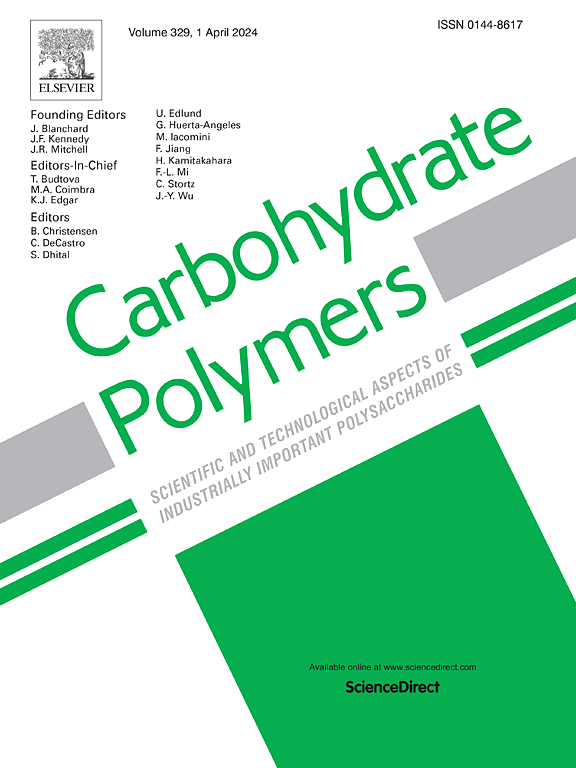Determination of physicochemical, functional,and morphological properties of Prosopis farcta (Çeti̇) seed galactomannan as a new hydrocolloid source: Comparison with locust bean gum
IF 12.5
1区 化学
Q1 CHEMISTRY, APPLIED
引用次数: 0
Abstract
The present study investigated the properties of galactomannan, a water-soluble polysaccharide extracted from the Prosopis farcta (Çeti) plant. These properties encompassed its functional characteristics, chemical composition, rheological behavior, and morphological structure. The results were systematically compared with those of the commercially utilized locust bean gum (LBG). Following ethanol precipitation, the yield of Prosopis farcta galactomannan (PFG) was determined to be 22.4 ± 0.5 %. The mannose-to-galactose (M: G) ratios of PFG and LBG were calculated as 1.7:1 and 3.3:1, respectively. The solubility of PFG exhibited a temperature-dependent increase akin to that of LBG. Notably, PFG demonstrated superior emulsion capacity and stability even at low concentrations. Additionally, the X-ray diffraction (XRD) analysis revealed asymmetric broad peaks around the 2θ = 20° diffraction angle, signifying the amorphous nature of PFG. Scanning electron microscopy (SEM) images, obtained after dissolving both PFG and LBG in deionized water and freeze-drying them, displayed a fibrous filament network structure in both samples.

半乳甘露聚糖作为一种新型水胶体来源的理化、功能和形态特性的测定:与刺槐豆胶的比较。
本研究对半乳甘露聚糖的性质进行了研究,半乳甘露聚糖是一种从甜菜(Çeti)植物中提取的水溶性多糖。这些性质包括其功能特征、化学成分、流变行为和形态结构。并与商业利用的刺槐豆胶(LBG)进行了系统比较。经乙醇沉淀法测定,半乳甘露聚糖(PFG)得率为22.4%±0.5%。PFG和LBG甘露糖/半乳糖(M: G)比值分别为1.7:1和3.3:1。PFG的溶解度表现出与LBG相似的温度依赖性增加。值得注意的是,PFG即使在低浓度下也表现出优异的乳化能力和稳定性。此外,x射线衍射(XRD)分析显示,PFG在2θ = 20°衍射角附近有不对称的宽峰,表明PFG具有非晶态性质。将PFG和LBG溶解在去离子水中并冷冻干燥后获得的扫描电镜(SEM)图像显示,两种样品均呈纤维丝网状结构。
本文章由计算机程序翻译,如有差异,请以英文原文为准。
求助全文
约1分钟内获得全文
求助全文
来源期刊

Carbohydrate Polymers
化学-高分子科学
CiteScore
22.40
自引率
8.00%
发文量
1286
审稿时长
47 days
期刊介绍:
Carbohydrate Polymers stands as a prominent journal in the glycoscience field, dedicated to exploring and harnessing the potential of polysaccharides with applications spanning bioenergy, bioplastics, biomaterials, biorefining, chemistry, drug delivery, food, health, nanotechnology, packaging, paper, pharmaceuticals, medicine, oil recovery, textiles, tissue engineering, wood, and various aspects of glycoscience.
The journal emphasizes the central role of well-characterized carbohydrate polymers, highlighting their significance as the primary focus rather than a peripheral topic. Each paper must prominently feature at least one named carbohydrate polymer, evident in both citation and title, with a commitment to innovative research that advances scientific knowledge.
 求助内容:
求助内容: 应助结果提醒方式:
应助结果提醒方式:


